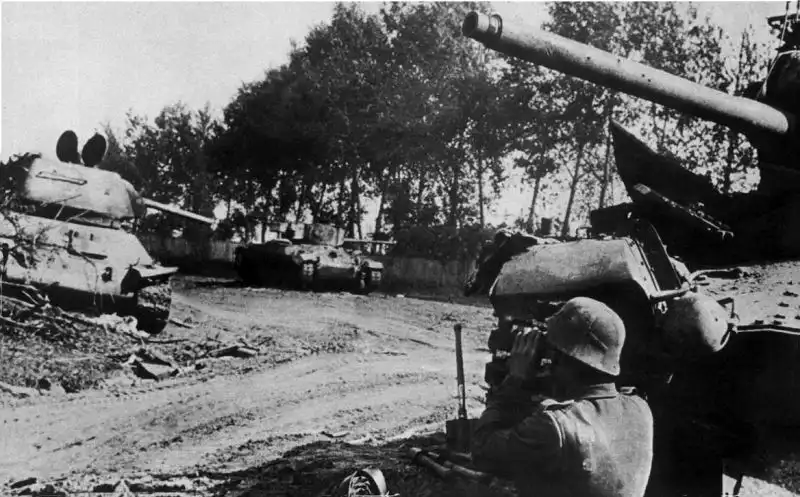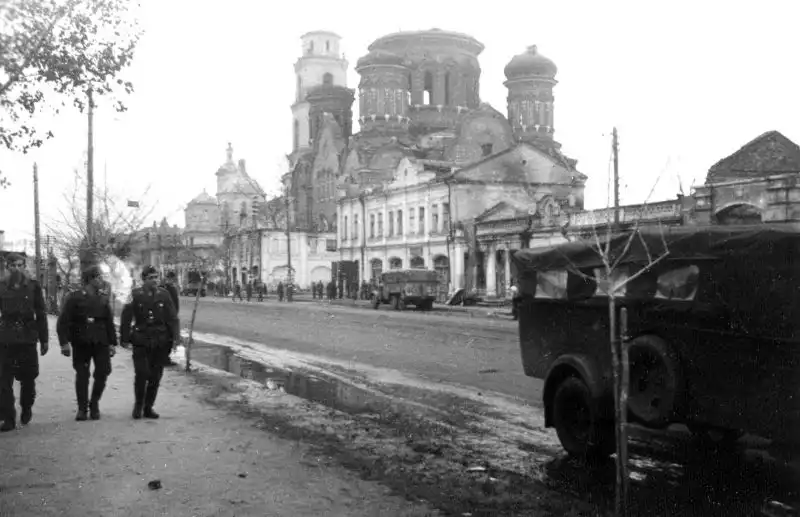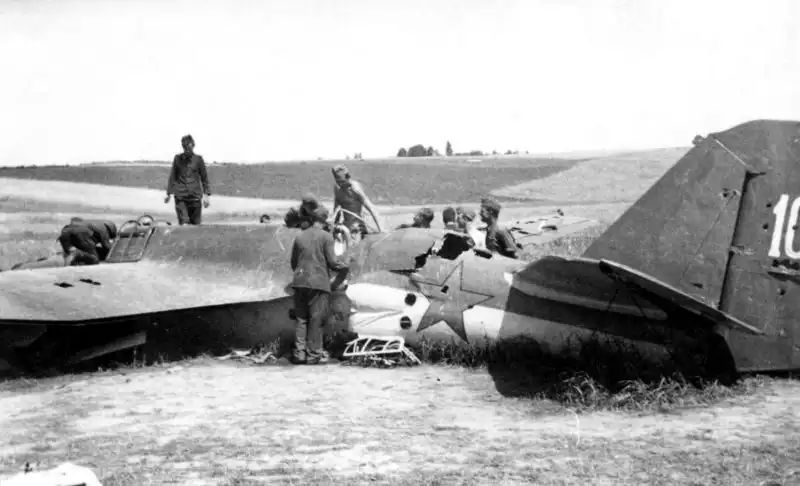Victory Banner Returns to Moscow from Berlin – June 1945
June 8, 2025 - Reading time: 4 minutes
Arrival of the Victory Banner from Berlin at the Central Moscow Airfield, led by Captain Valentin Varennikov

A moment of solemn triumph: June 20, 1945, on the tarmac of Central Moscow Airfield, the Victory Banner — the one hoisted above the Reichstag — is being brought home. A handful of weeks after the guns fell silent in Berlin, this piece of red cloth, soaked in symbolism, flies again — this time not over a battlefield, but in the heart of a victorious nation.
At the head of the column marches Captain Valentin Ivanovich Varennikov, tall and resolute. He would later become Army General, First Deputy Chief of the General Staff, and a Hero of the Soviet Union. But here, in this black-and-white still, he is simply a Soviet officer representing a million fallen, and a million more who lived through hell to see this day.
The soldiers behind him walk with precision and quiet pride, their boots landing in sync on the tarmac. They're not marching in parade — they're accompanying a relic, a witness of war, a living banner of vengeance fulfilled.
No cheering crowds, no fireworks — just the banner, the steel gaze of those who brought it, and the silent hum of engines in the background. A nation holds its breath as it watches the crimson cloth flutter above the ground it helped keep free.
In just over a month, this banner will be hoisted again — this time during the Victory Parade on Red Square, under the eyes of Stalin himself. But in this moment, its arrival is personal, raw, real. A thread stretched between Berlin and Moscow, between sacrifice and memory.
📷 Technical photo data:
📸 Photographer: Dmitry Chernov
📅 Date: June 20, 1945
📍 Location: Moscow, USSR
-
"Victory Banner WWII photos"
-
"Soviet symbols WWII end of war"
-
"Berlin to Moscow Victory Banner return"
Tags
Category
Search
Categories
- Unidentified WWII Photos (12)
- World War II Photos 1937 (1)
- World War II Photos 1938 (1)
- World War II Photos 1939 (3)
- World War II Photos 1940 (5)
- World War II Photos 1941 (99)
- World War II Photos 1942 (55)
- World War II Photos 1943 (50)
- World War II Photos 1944 (76)
- World War II Photos 1945 (40)
- WWII and Postwar Photos 1946 (1)





